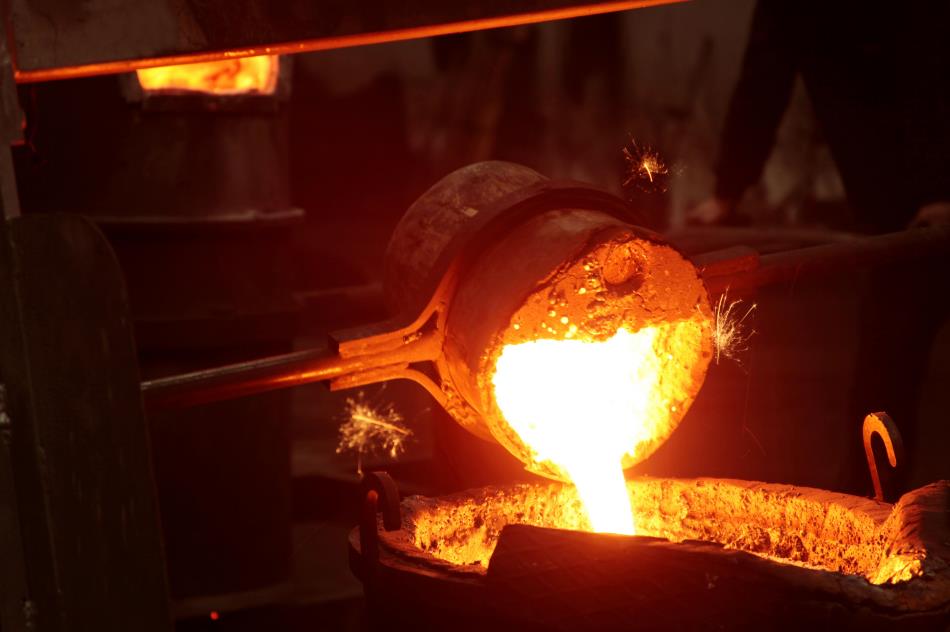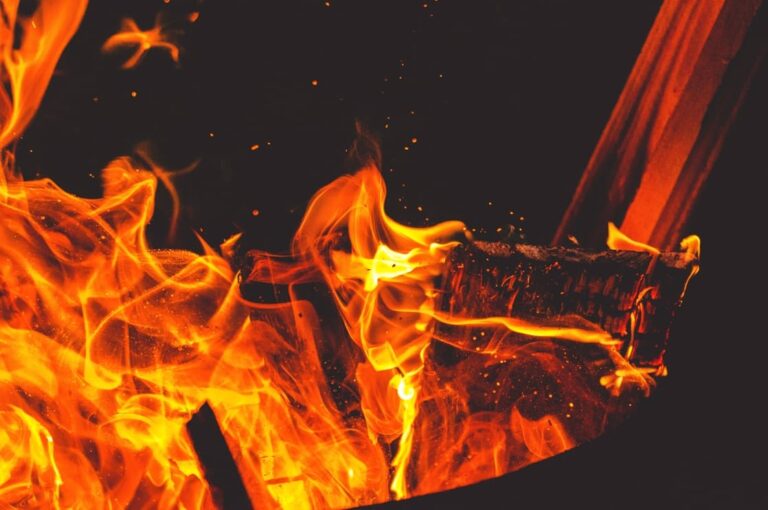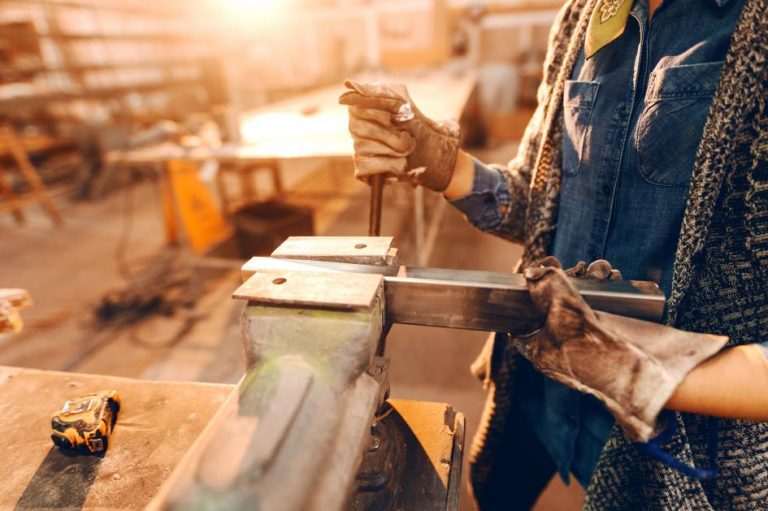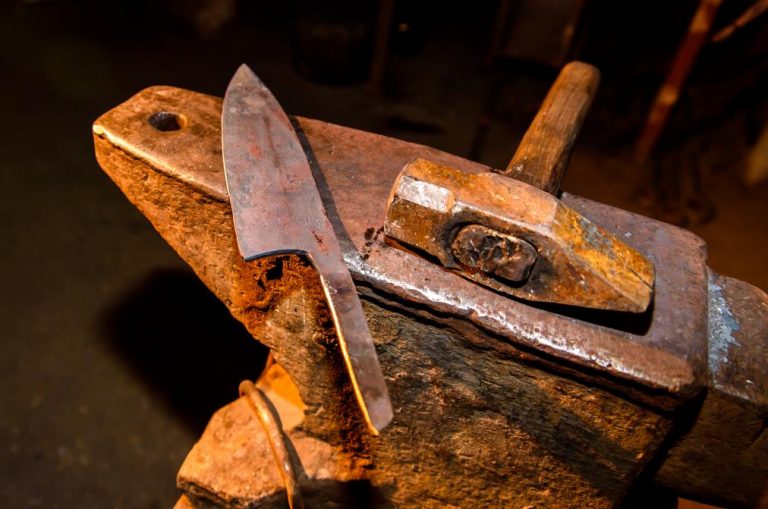Damascus steel is one of the oldest materials used for crafting blades, renowned for its water-marked patterns.
It wasn’t just the aesthetics that made it a highly-sought material, though. Damascus steel outperformed many blades made from iron and other steel of the time.
Damascus steel today isn’t the same as it was before. In the past, the original Damascus steel can also be called as wootz steel. The making of wootz steel required certain iron mine in India that produced ore with specific composition. Even though it’s an ancient material that proved its usefulness for centuries, it isn’t produced anymore – at least not by the mass. It’s not to say the original Damascus steel is lost.
There are more differences than similarities between the old wootz steel and the modern Damascus steel. This article will go over everything about them, covering the forging methods, features, and more.
What is wootz steel?

Wootz steel is crucible steel, made by melting crude iron in a crucible with fluxes, like charcoal, ashes, sand, or others. Therefore, it wasn’t forged but melted.
The origins of wootz steel trace back to India. However, it wasn’t the only production area. Sri Lanka was also a major producer, which exported it to many traders looking for goods.
The characteristics of wootz steel varied but most produced a strong blade that can hold a keen cutting edge. The analyzed wootz steel samples had more than 1% carbon in the composition. This hints at some information about wootz steel’s potential hardness and wear resistance.
Wootz steel was indeed beyond its time. The strength and the gorgeous watery marks lead to mentions in the literature of many kingdoms, including Greek, Chinese, and Roman.
What is Damascus steel?
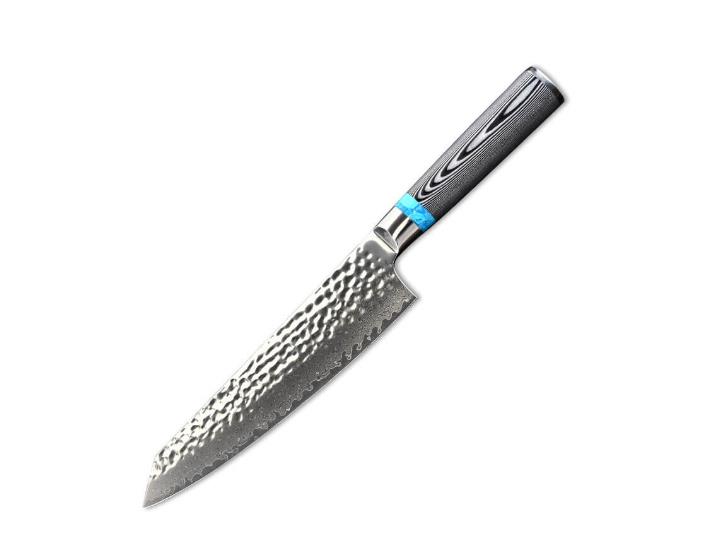
The original Damascus steel is the metal forged using ore with specific composition. The steel gets its name from the main production area Damascus Syria. Additionally, the word “damas” means watered in Arabic. Since Damascus steel had watery marks on the surface, it translated as watered steel in many other languages.
Damascus steel was known for its strength and sharpness. It was told that the swords and daggers could bend 90 degrees without breaking.
While the use of wootz steel for the original Damascus steel is certain, the exact manufacturing process was lost for a very long time. The metallurgists and historians successfully reproduced the ancient wootz steel not until recently.
The wootz steel replications aren’t as sought after as their originals. Since there are many alternatives in the market today that can outperform them in terms of hardness, durability, edge retention, etc.
Buy Wholesale Knives and Start Scaling up with Us Today
Contact us and connect with a sales rep to get a free quote.
What is pattern welded steel?
In today’s knifemaking, pattern welded steel took the name of Damascus steel because it has similar wavy patterns as the wootz steel. It follows a simple process that involves welding multiple steel billets in the forge by pressing, hammering, and twisting.
The result is comparable watery patterns to the original Damascus steel. For this reason, pattern-welded steel and Damascus steel are interchangeable. Any commercially available product made from Damascus steel is pattern welded steel.
However, pattern welding isn’t a forging method that came out after the loss of making the original Damascus steel. This forging method has been utilized by blacksmiths since the first millennium BC.
Wootz (Original) vs. pattern-welded Damascus steel

Here are the contrasts between the original and modern Damascus steel.
Patterns
Wootz steel gets its patterns from the impurities it has. The ferrite and cementite mix together during the forging process. When this happens, the bands of clustered cementite lead to the patterns. The carbon crystals bond with iron, giving wootz steel its physical properties.
Modern Damascus steel, on the other hand, doesn’t have patterns due to its chemical composition. Welding alternating layers of steel blocks and where each billet meets up reveals the patterns.
Twisting, folding, hammering a specific area, pressing, and all the other steps to making pattern-welded steel result in a different look. That’s why there are multiple Damascus patterns.
Forging technique
The use of wootz steel is much older than pattern welded steel. In ancient times, humans couldn’t produce enough heat to melt iron, so they opted for crude iron, also known as pig iron. This metal had a high carbon content; thus, it didn’t require high temperatures to melt. After obtaining the metal, blacksmiths worked with wootz steel at low temperatures, hammered it to a sword, and left it to air cool.
Forging pattern welded steel isn’t an easy task. Sure, today’s blacksmiths have many sophisticated tools that help them. Still, it takes expert craftsmanship and years of experience to create pattern-welded steel without flaws.
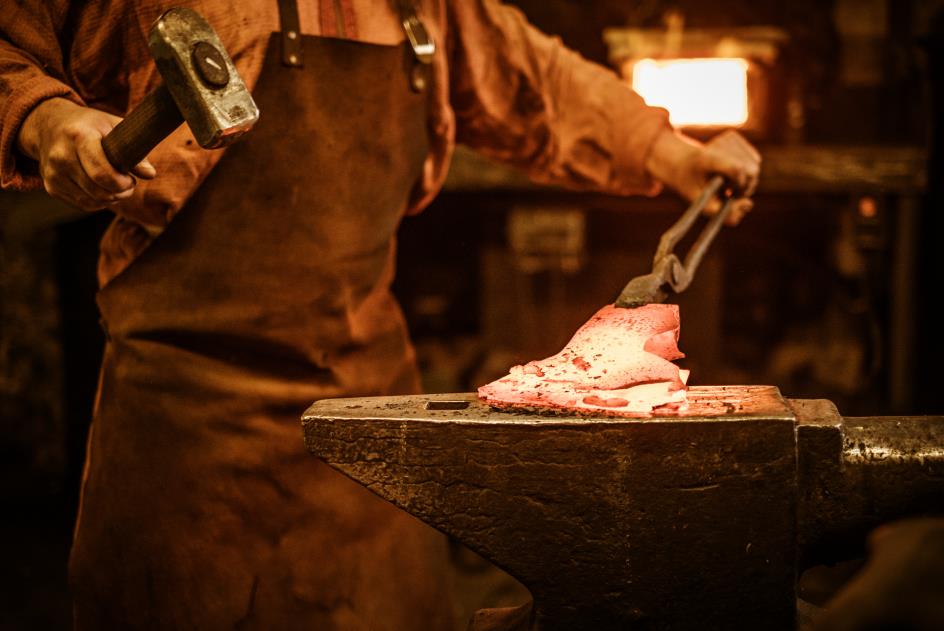
As mentioned, pattern welding follows the use of two or more steel billets, stacking them, and welding in the forge. Countless times of folding, twisting, hammering, and other procedures require a careful eye. If one goes out of order, the pattern they seek won’t come out as perfect.
Different characteristics
We can think of wootz steel as any other mono steel. It has specific properties, such as high carbon content. This enabled it to have good hardness. Possibly, good wear resistance and edge retention also.
That said, wootz steel has specific characteristics. When compared to today’s pattern welded steel, it’s significantly inferior.
Today’s steel is harder, stronger, corrosion resistant, and has finer carbides achieving incredible sharpness. These are not a match for wootz steel, though it was undoubtedly ahead of its time.
Is Damascus steel better than regular stainless or carbon steel?
All three of these cover a broad category of individual steel. Many Damascus steel knives will outperform stainless and carbon steel knives. However, just as many stainless and carbon steel blades will also overpower Damascus steel knives.
Therefore, it depends on the specific steel, heat treatment, and the buyer’s preferences. If edge retention is above all else, carbon steel satisfies. If corrosion resistance and toughness are key needs, stainless steel is the better option. If the user wants something that has it all with toughness in front, Damascus steel is one step ahead.
We’ve put together an article comparing Damascus and carbon steel with mentions of stainless steel. Read it from here.
Is selling Damascus steel knives in your store a good idea?
The mesmerizing patterns of Damascus steel with the good qualities makes them favorable. You’ll get many customers paying attention to Damascus steel products more than the others. Nevertheless, know that it isn’t for everyone.
The labor, materials used, and craftsmanship of the blacksmith make Damascus steel an expensive material. This reflects in the price of Damascus steel knives. Most blades cost at least $100 per item and go up to thousands.
Undoubtedly, where you get the products also matter to offer affordable options, but this is the case with most Damascus steel knives.
Buy Wholesale Knives and Start Scaling up with Us Today
Contact us and connect with a sales rep to get a free quote.
The bottom line is Damascus steel is an excellent product choice to sell if your customers are willing to pay a bit more. Think serious cooks, culinary schools, and professional chefs. If you’re often selling to these customer profiles, you can indeed find success with Damascus steel products.
Order Damascus steel products from LeeKnives
At LeeKnives, we manufacture many different Damascus steel knives. You can order individual blades or sets. We also offer OEM services where you have unlimited customization options. Browse our Damascus steel products from here.
Contact us to request a quote, and we’ll see how we can partner up to grow your knife business.
